Health equity in the transition to clean energy, safe drinking water for vulnerable children, protection from infection where we work and play, economically feasible actions with co-benefits for public health and climate sustainability — This work to create a healthy, sustainable and equitable future is uniquely possible at Gillings, where engineering, science and public health are found together, and where health equity has always been a central part of our mission.
Increasingly, the faculty and students of the Department of Environmental Sciences and Engineering (ESE) are responding to, planning for, and working to mitigate new and evolving public health threats – that oftentimes have a disproportionate impact on marginalized communities. Some of these threats include viruses transported by airborne particles, hazardous agents in contaminated floodwaters, antibiotic resistance, air pollution exposures from drought-enabled wildfires, changes in water availability in low-income countries, extreme weather-impacts on the financial health of local water districts and exposures to legacy and emerging contaminants.
Climate change will drive future challenges. As we approach ESE’s centennial, we celebrate tremendous environmental achievements and recognize the urgent need to mitigate and respond to the pressing challenges posed by global change. The World Health Organization (WHO) lists climate change as the No. 1 threat to global health in 2019; environmental change is an important driver of WHO’s top five identified threats. Notably, public health protection is central to all five pressing challenges identified in the National Academies (NRC) report on Environmental Engineering for the 21st Century. The projected impacts of climate change and antibiotic resistance on human health are expected to be particularly widespread and severe. Climate change brings droughts, floods, heatwaves and extreme weather events, which in turn impact air pollution, water availability and quality, toxic releases, food and nutrition, infectious and non-communicable diseases, and will increase migration and conflict pressure and exacerbate health inequities.
We will need integrated and holistic solutions. If anything, the past decade has shown that stove-piped responses will not deliver the long-term, sustainable results we need. Engineering solutions to household water service provision, for example, must be done within the broader context of a one-health approach to providing a disease-free living environment if we are to meaningfully reduce water-related diseases. As environmental scientists and engineers located within the top public school of public health, ESE is ideally positioned to provide holistic, intersectoral responses to mitigate and prepare for the pressing environmental challenges (e.g., by characterizing susceptible populations, characterizing and prioritizing health risks, examining energy policy options with co-benefits for health, engaging communities to improve resilience, and designing next-generation technologies). Thus, on the occasion of our centennial, while we celebrate a century of environmental solutions to public health problems, we affirm our commitment to build public health resilience to climate and environmental change.
ESE: A history of leadership. Our work today builds on ESE’s long tradition of local and global impact. We are the nation’s first engineering department in a school of public health. We enrolled our first Sanitary Engineering master’s student, Roy Jay Morton, under Thorndike Saville in the fall of 1920, when there was a pronounced need to improve water safety in the towns and cities of N.C. ESE was a founding department of UNC’s School of Public Health (1940) under Herman Baity. Within the first 50 years of our history, international aid organizations were sending students from several continents to be educated by the department, and an estimated 25% of graduates were addressing water and sanitation challenges in international health organizations and foreign governments, including African and Latin American countries (based on a survey of graduates in 1971). Three of the first four Directors of Environmental Health at the World Health Organization were our alumni. Under the leadership of Dan Okun (1955-1973) and continuing under Russell Christman (1973-1989), ESE became a truly interdisciplinary department, providing a quantitative education in environmental sciences and engineering, with substantial faculty expertise spanning sciences, engineering, management and policy domains in air, water and industrial hygiene. The department’s current name was adopted in 1962 and William Glaze (1989-1997) added faculty in the health sciences.
Building the next generation of leaders. Today, ESE has over 2000 practicing alumni. Our graduates take with them an integrated, interdisciplinary, quantitative, mechanistic education that links health risks back to sources. They are engaged in efforts to improve environmental quality locally and globally, including through technological innovation, effective environmental policies, research and community engagement. We have an internationally recognized faculty in air pollution, environmental health sciences, climate change and health, global water policy, infectious disease and microbiology, environmental chemistry, transport, and engineering. We are home to UNC’s Water Institute, Center on Financial Risk in Environmental Systems, the Institute for Environmental Health Solutions, and participate in UNC’s strong university-wide environmental and climate change communities. Since its founding, the Gillings School of Global Public Health has been a consistent advocate for health equity locally and globally.
More information about our department
Our History
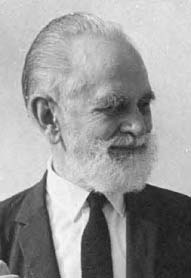
Dr. Herman G. Baity
The Department of Environmental Sciences and Engineering (ESE) was founded at the University of North Carolina at Chapel Hill in 1921 for the purpose of instruction and research in sanitary and civil engineering. The first graduate student in sanitary engineering, Roy Jay Morton, matriculated in 1923 to study under the direction of Dr. Thorndike Saville. Dr. Saville was then Dean of Engineering; in those days, UNC-Chapel Hill offered a full program in Engineering. Dr. Herman G. Baity, the recipient of the first PhD in Sanitary Engineering to be awarded in the U.S., joined the department in 1926, and in 1932 replaced Dr. Saville as Dean of Engineering at UNC-Chapel Hill. He served in that capacity until 1936, when the School of Engineering moved to North Carolina State University in Raleigh as part of a move to consolidate the UNC system resources in the aftermath of the Depression. It was Dr. Baity’s determination to remain in Chapel Hill that established a Department of Sanitary Engineering in the new Division of Public Health, which became the School of Public Health in 1940. Graduate degrees offered at that time included the Master of Science in Sanitary Engineering (MSSE), the Master of Science in Public Health (MSPH) and the Master of Public Health (MPH).
Select to read more about our history. Dr. Daniel Okun, 2006 (Photo courtesy of The News and Observer) In 1952, Dr. Daniel A. Okun replaced Dr. Baity as head of the Department of Sanitary Engineering. Under Dr. Okun’s leadership, the Department brought on scientists in the fields of air and industrial hygiene (including Dr. Dave Fraser and Dr. Arthur Stern, aka “Mr. Air Pollution”), radiological hygiene, environmental chemistry and environmental biology, and the research focus of the Department was clearly established. Doctoral study was inaugurated in 1959. In 1962, the Department of Sanitary Engineering was renamed the Department of Environmental Sciences and Engineering. Dr. Russell F. Christman When Dr. Okun retired after 18 years as Chair, Dr. Russell F. Christman was appointed chairman. Serving in this role from 1973 until 1989, Dr. Christman steered ESE through the increase in environmental awareness of the 1970s and 1980s, which paralleled the development of the Environmental Protection Agency (EPA). The heightened awareness during this period brought attention to the department and ESE expanded as research funding from the federal government became more available. Dr. Christman was himself a major figure in the field of water chemistry, particularly the study of humic substances. During this period ESE’s role in atmospheric chemistry strengthened, aided by facilities such as the UNC Outdoor Smog Chamber. Dr. Bill Glaze In 1989, Dr. William H. Glaze, also a specialist in water chemistry, became chair of the department. During his eight years in this role, Dr. Glaze worked steadily to encourage the pursuit of environmental education across disciplines. Also during this time-frame, the Department enhanced its role in the Environmental Health Sciences, and pursued major interdisciplinary research initiatives such as the Superfund Basic Research Program. Dr. Cass Miller In the fall of 1999, Dr. Cass T. Miller, a hydrological engineer and ESE faculty member since 1985, was named chair of the department. Under his leadership, modeling flourished, the department further emphasized interdisciplinary research and initiated a curriculum revision. Dr. Miller served until July 2005. Dr. Michael Aitken Michael D. Aitken, PhD, who joined the Gillings School in 1988, served as chair from 2006 to 2016. During his tenure, Aitken saw the formation of The Water Institute at UNC. The Institute’s director, Jamie Bartram, PhD, came to the Department in 2009 from the World Health Organization, where he directed the same environmental health program that Herman Baity founded more than 50 years earlier. Aitken’s research continues to focus on the application of microbial processes to the biodegradation of organic pollutants and to waste treatment problems. Dr. Barbara Turpin The current chair, Barbara J. Turpin, PhD, is internationally renowned for her work on the atmospheric chemistry and physics of aerosols, and a primary focus of her research is to improve understanding of the impact of air pollution emissions upon human health. Turpin is a fellow of the American Association for the Advancement of Science, the American Geophysical Union and the American Association for Aerosol Research, of which served as president from 2012 to 2013. She also is an associate editor of the journal Environmental Science and Technology and has served on the boards of several other professional journals. Diversity and Inclusion Contact Information Student Affairs Assistant to Chair Phone Mailing Address
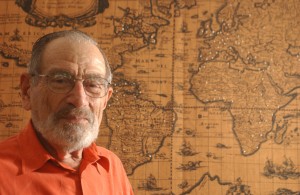
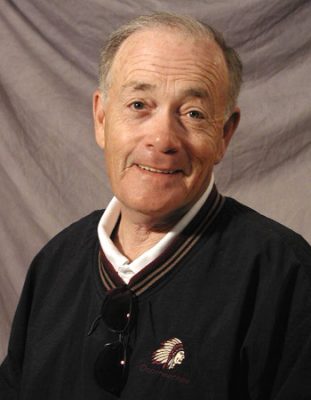
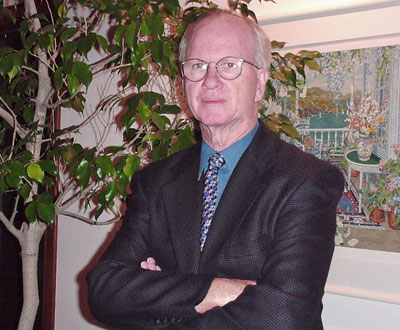
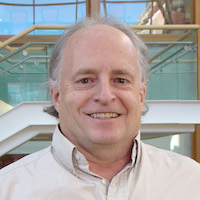
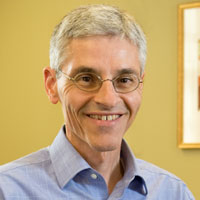

At the Gillings School, diversity and inclusion mean we welcome, value and learn from individual differences and perspectives. By cultivating inclusion within the School, we better prepare our students, faculty and staff for the diverse world that awaits them. A globally-interconnected world needs culturally competent people to serve as its leaders. Diversity and inclusion are assets that contribute to our excellence.
Our offices are located on the first floor of Rosenau Hall.
Contact your academic coordinator.
Rhoda Cerny: rcerny@email.unc.edu
(919) 966-1171
Department of Environmental Sciences and Engineering
UNC Gillings School of Global Public Health
135 Dauer Drive
166 Rosenau Hall, CB #7431
Chapel Hill, NC 27599-7431
